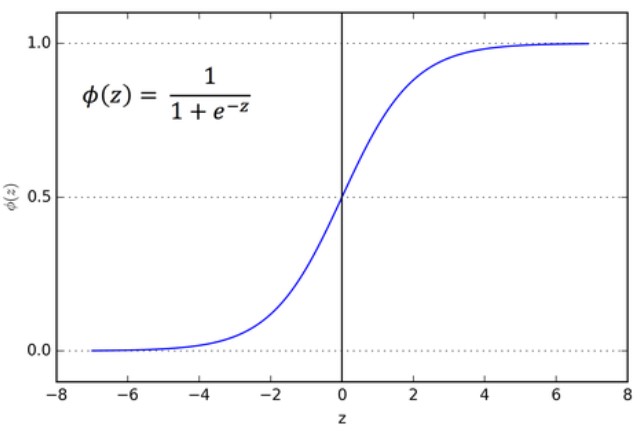Logistic Regression Example
Table of contents
Logistic Regression
Logistic Regression is a binary classification algorithm that predicts with the given input how much is probable that output is either 1 or 0. Regression analysis is a method that wants to find a relation between one independent variable and one dependent variable.
for instance, we are the owner of a gym club and we want to have weight loss program for are attendants we have gathered data of exercise hour and weight loss in a single month and we want to predict how much time is a need for our newcomer john to loss 5 pounds in a month.
 gym owner will try to draw a line we yield to least sum of squares to find a pattern to between weight loss and exercise hour
as we can we this equation can be modeled using a linear equation
gym owner will try to draw a line we yield to least sum of squares to find a pattern to between weight loss and exercise hour
as we can we this equation can be modeled using a linear equation
ŷ = b0 + b1x
the problem that we have is gym owner wants to predict that John could achieve more than 5-pound loss with 20 hours a month for probability value should be always between 0 up to 1 whereas weight loss can be any number here we look logistic regression that uses sigmoid function in order to bound linear regression to 0 or 1

ŷ = σ(b0 + b1x)
we will classifiy liris with logistic regression
from sklearn.linear_model import LogisticRegression
from sklearn.model_selection import train_test_split
from sklearn.metrics import accuracy_score
For working better with data
import pandas as pd
import numpy as np
For visualizeing data
import matplotlib.pyplot as plt
from mpl_toolkits.mplot3d import Axes3D
Loading dataset
sklearn has a built-in tool for loading common datasets for educational purposes we used direct loading from CSV
dataset = pd.read_csv('./datasets/Iris.csv')
X = dataset.iloc[:, 0:4 ].values
Y = dataset.iloc[:, 4].values
Splitting dataset into training and testing
X_train, X_test, y_train, y_test = train_test_split(X, Y,
test_size=0.25,
random_state=0)
define and fit model
clf = LogisticRegression(random_state=0, solver='lbfgs',
multi_class='multinomial').fit(X_train, y_train)
print(clf.score(X, Y))
Predicting the Test set results
y_pred = clf.predict(X_test)
print(y_pred)
# accuracy on test set
accuracy_score(y_test, y_pred, normalize=True, sample_weight=None)